Australia is famous for its unique wildlife and while the cities are not typically considered as wildlife-watching destinations, with a bit of luck and effort you can see some of Australia’s most iconic animals in and Sydney.
Sydney – Australia’s largest city managed to retain a fraction of its former biodiversity throughout centuries of development. Birds can be easily seen in the city parks and leafy suburbs while finding mammals in Sydney requires some time, patience and knowing where to look.
Best Wildlife Tours from Sydney
Most places mentioned below can be explored independently, but if you would like to join an organized tour to maximize your wildlife spotting opportunities or to see marine wildlife species, here are some of the best wildlife tours from Sydney.
- Walking with Wombats Experience – a fantastic day tour to the Southern Highlands and Kangaroo Valley – the best place around Sydney to spot wombats and kangaroos.
- Blue Mountains, Jenolan Caves, and Kanangra Lookout tour – a great opportunity to see kangaroos, wallabies, echidnas and other wildlife in the spectacular setting on Blue Mountains. Plus a visit to the stunning Jenolan caves.
- Sydney Whale-Watching Cruise with Breakfast or Lunch – your opportunity to watch Humpback Whale migration past Sydney (May to October)
- Blue Mountains Glow Worm Adventure by Night – See the forest light up like the Milkyway at night, only instead of stars, the source of light is the tiny glow worms. You can also spot other nocturnal wildlife as you walk through the Blue Mountains after dark.
FAQ about Sydney wildlife
What animals can you see in Sydney?
There are both native and introduced mammals living in Sydney. The most common natives are possums, gliders, kangaroos and wallabies. With a little bit of effort, you can also find echidnas, bandicoots, koalas, wombats and bats. The introduced rabbits are a common sight in the city parks and foxes can often be spotted in the suburbs.
Are there kangaroos in Sydney?
Yes! With a bit of luck and dedication, you can see Eastern grey kangaroos in Sydney
Are there koalas in Sydney?
Yes! Though koalas are trickier to find. The largest surviving population lives in the Campbelltown area on the outskirts of the Sydney metropolitan area. See more details below.
Where can I see wildlife in Sydney?
Sydney is surrounded by National Parks that are home to a great variety of Sydney animals. Royal National Park, the Blue Mountains and Kur-ring-gai Chase National Parks are some of the best areas for spotting wildlife around Sydney. And if you head out to the ocean, you’ll have a chance to spot a few marine species, like whales, dolphins and fur seals.
So, if you are ready for an adventure of spotting wildlife in Sydney, here is the list of some common species and the best spots to see them.
Koala
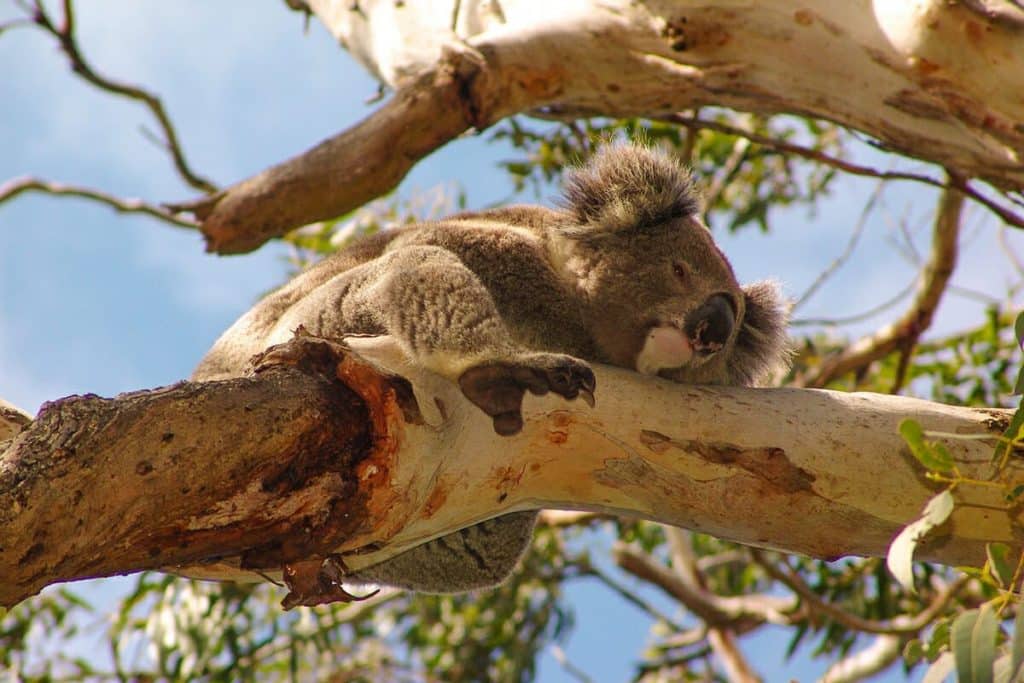
Starting with one of Australia’s most loved marsupial, the koala. Are there koalas in Sydney? Yes. They are not the easiest animals to find, and certainly not too close to the city centre, but with a bit of determination, you can see koalas in Sydney.
About 300 koalas live in the Macarthur bushland in western Sydney. It is the largest population in Sydney and, more importantly, it is one of the few chlamydia-free koala populations.
The best place to look for them is a small patch of bushland near Campbelltown train station, called Smiths Creek Reserve. For the best chance of spotting a koala, walk slowly through the reserve and scan the canopies of eucalypt trees as you walk along.
There are also some koalas in Heathcote National Park, however, finding them in the park is quite difficult.
Common Wombat
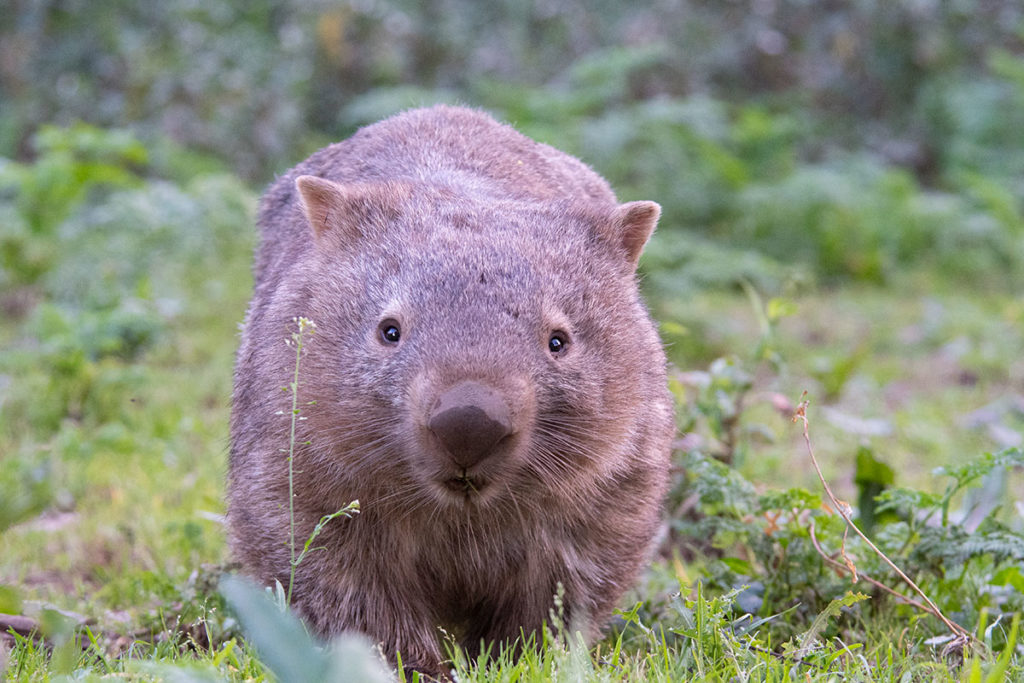
The closest relative of the koala, the Wombat is a stocky, short-legged marsupial that lives in interconnected burrows that it digs with the help of its long claws. To accommodate the digging lifestyle, wombats developed an interesting adaptation – their pouches face backwards, like in Tasmanian devils.
Wombats are harder to spot around Sydney than most other animals on this list, but you can usually see signs of their presence: square droppings, usually placed on top of rocks and giant entry holes to their burrows. The animals themselves are occasionally spotted in Kur-rin-gai Chase National Park and in the Blue Mountains, particularly in Wolgan Valley.
But the best place to see wombats near Sydney is the beautiful Kangaroo Valley. Visit Bendeela campground in the late afternoon and watch dozens of wombats emerge from their burrows to graze on grasses, herbs and leaves on the grassy clearing of the campground. You can also take this amazing day tour from Sydney to Kangaroo Valley and spend an afternoon walking among wombats and Eastern grey kangaroos.
READ MORE: Australian Animals – The Wierd and Wonderful Creatures of Down Under
Kangaroo and wallabies
Eastern Grey Kangaroo
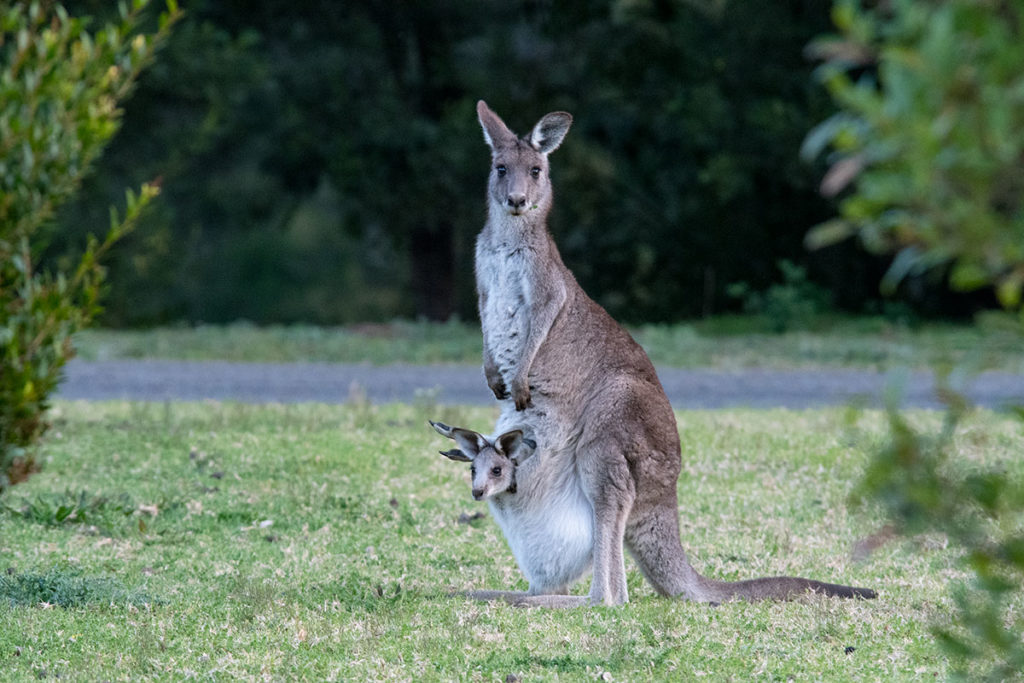
The Kangaroo is the most quintessentially Australian animal. And it is one of the most common wild animals in Australia. I am often asked “Are there kangaroos in Sydney or “Where to see kangaroos in Sydney”? And the good news is – yes, there are and they are not hard to find.
The Eastern grey kangaroo can often be found at golf courses, particularly on the North Shore. But the best places to see the wild kangaroo are Mt Annan Botanic Gardens in Western Sydney and Euroka Campground in the Blue Mountains. Jenolan Caves are also quite good for spotting kangaroos in the open areas around the hotel, as are Megalong and Wolgan valleys.
Alternatively, you could take a tour to the Southern Highlands with Perfect Day Sydney that takes you to Kangaroo Valley to see wombats and kangaroos.
Swamp Wallaby
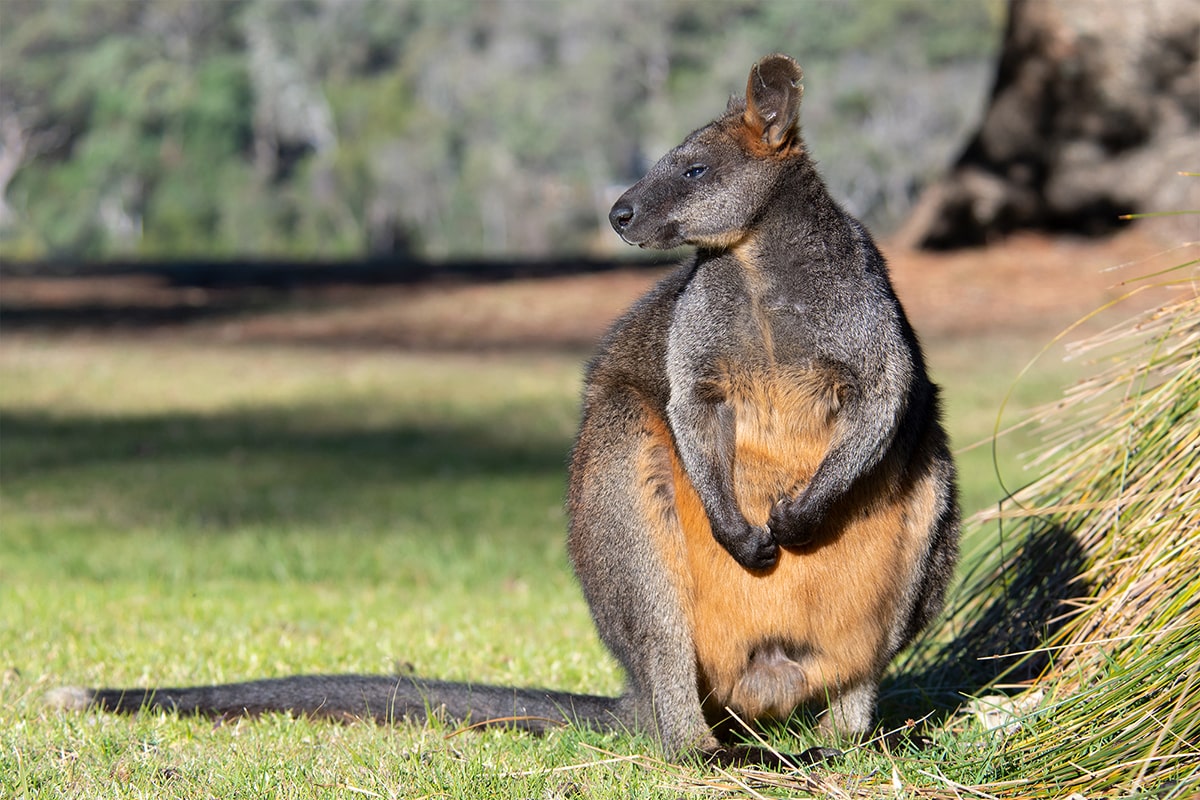
Wallabies are very similar to the Kangaroo, but smaller in size. The most common wallaby in Sydney is the Swamp wallaby. It is mostly grey in colour with a darker back and light orange chest.
It prefers dense forest habitats but can often be found in open areas. They are regularly seen in the Blue Mountains and the Royal National Park. A particularly good spot for these animals in Sydney is The Basin campground in Kur-ring-gai National park.
Although, you can find them much closer to the city – in Mt Annan Botanic Gardens in western Sydney. There are occasional nocturnal walks conducted by the gardens, that will give you a good chance to spot some of Sydney’s nocturnal mammals.
Another good area to look for swamp wallabies is Royal National Park, particularly around Garie and North and South Era beaches. They tend to get accustomed to people around the campsites and can often be spotted browsing during the day.
Red-necked Wallaby
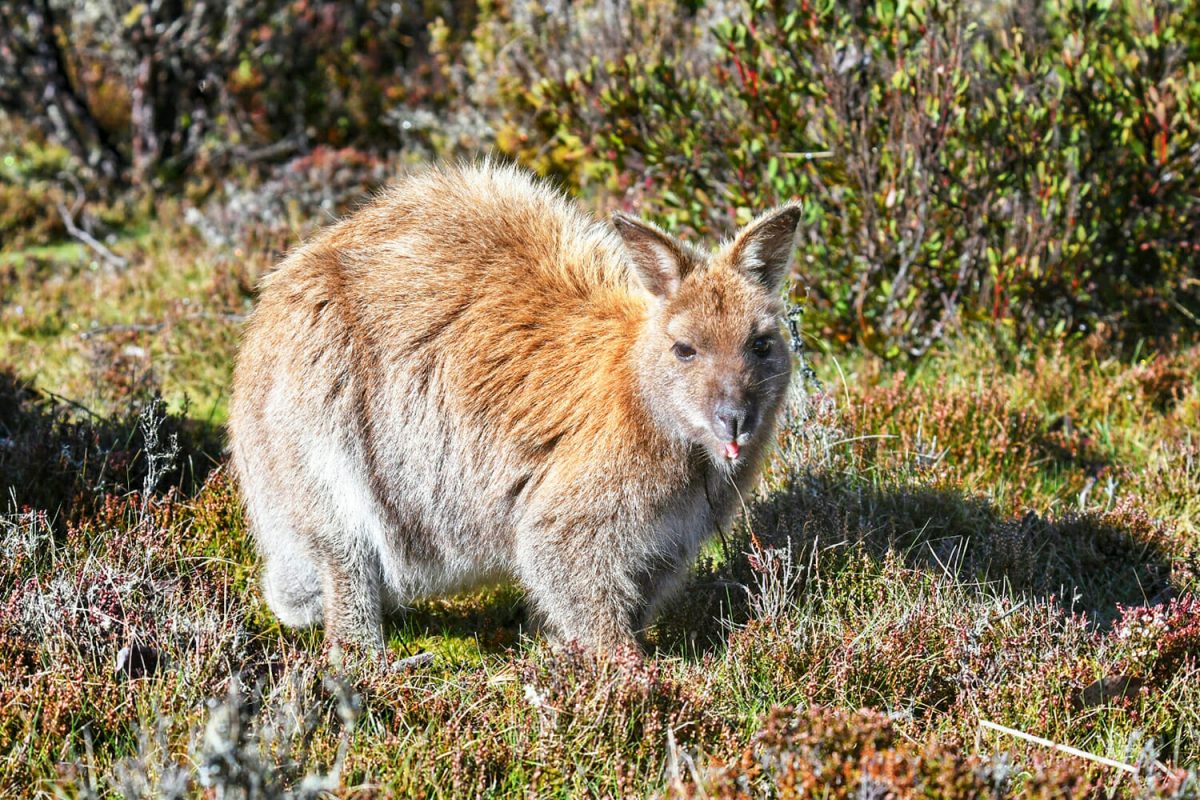
Another common wallaby in the Sydney region is the Red-necked wallaby. Its name comes from the reddish fur on their shoulders and neck. Good places to spot this species are Wollemi National Park and the Watagans Mountains.
Brush-tailed rock-wallaby
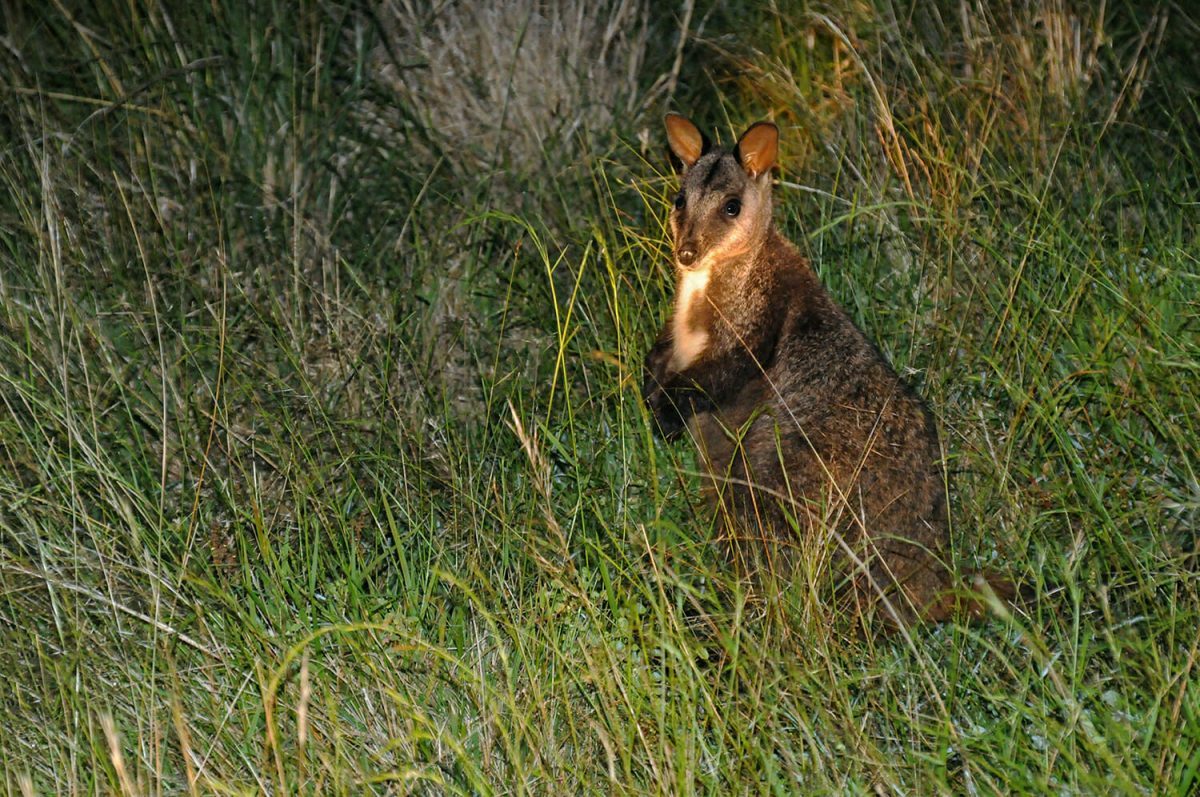
There is also a population of the locally endangered Brush-tailed rock-wallabies living on the steep cliffs in the Watagan Mountains in the northern part of the park at Heaton Gap.
But the best place to see these adorable macropods is Jenolan Caves in the Blue Mountains World Heritage Area, just a 2.5hr drive from Sydney. There are about 100 brush-tailed rock-wallabies living in the Jenolan Valley and a good place to spot them is McKeown’s Valley Track.
Short-beaked Echidna
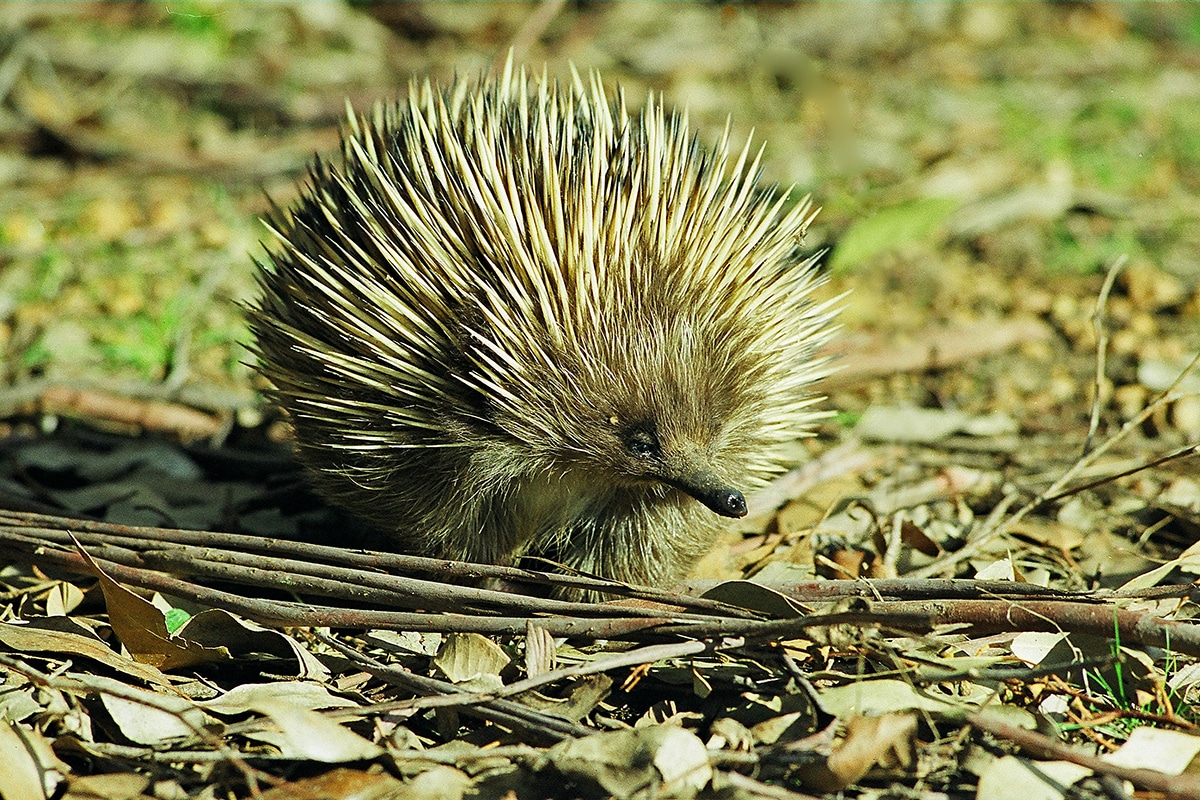
The Short-beaked Echidna is covered in fur and spines, much like a porcupine, though it is a very different animal.
The echidna is one of Australia’s two orders of monotremes – mammals that lay eggs instead of giving birth to live young. They are considered to be the oldest evolutionary branch of mammals.
While the echidnas are not among the common Sydney animals, they can be found in the national parks on the fringes of the city. The Blue Mountains and Royal National Park are good places to look for them in the warmer months
Platypus
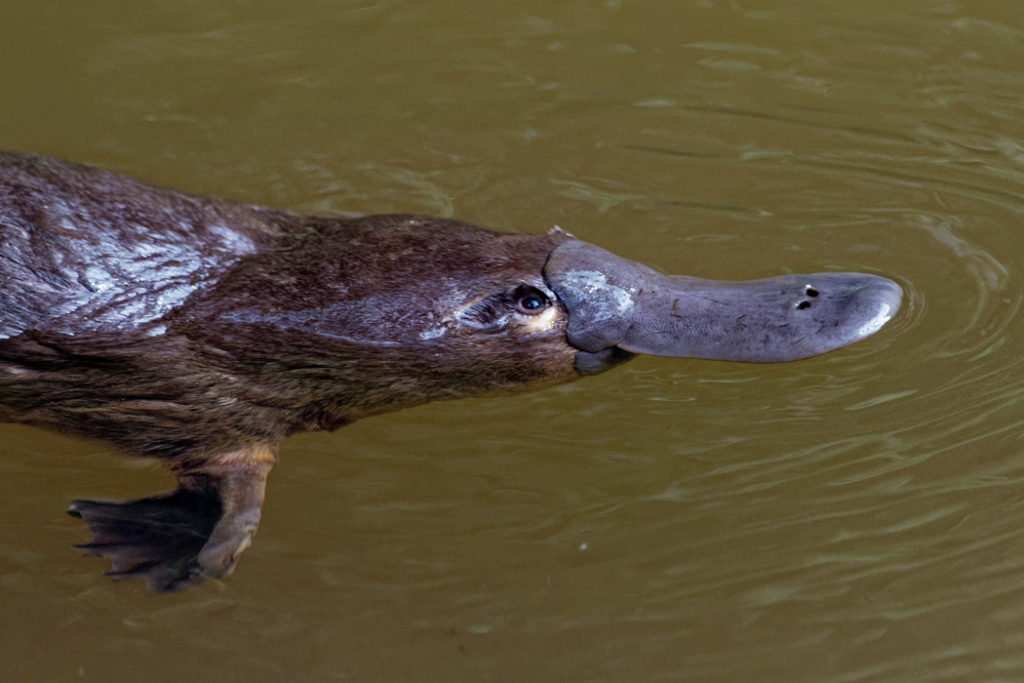
Another monotreme, the Platypus is so odd-looking that British zoologists believed it to be a hoax when the first specimens were brought back from Australia. It is a venomous mammal that looks like a combination of a beaver, an otter and a duck, lays eggs, and can detect electrical impulses emitted by its prey.
Spotting a Platypus in the wild will take a lot of luck, it is one of the most elusive Sydney animals. The best place to look for Platypus in Sydney is the Blue Lake near the entrance to the Jenolan Caves in the Blue Mountains. The lake is a beautiful spot to visit in its own right. It owes its unusual colour to calcite flowing in from the limestone caves. Sit quietly by the lake at dawn or dusk and watch the water for the ripples. If you are lucky, you will spot the oddest Australian native animals emerging on the surface.
Paradise Pool in Linden has also been suggested as a good site for platypus. I haven’t personally visited the pool at dusk, but it would be an interesting site to explore.
You could easily combine the trip to Jenolan Caves with a visit to Euroka clearing to see the resident mob of Eastery Grey Kangaroos.
Possums and Gliders
Brushtail possum
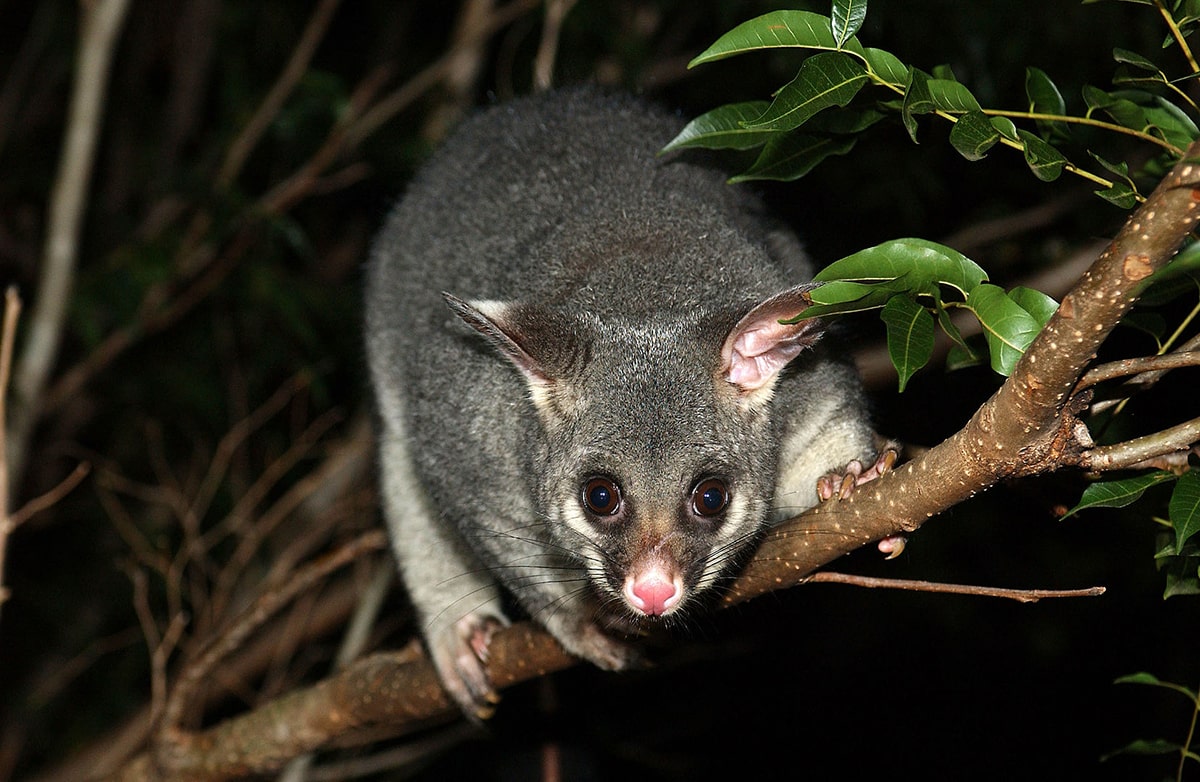
The most common mammal in Sydney, the Brushtail possum is the second-largest possum in Australia, about the size of a domestic cat. It is nocturnal and arboreal and exceptionally well adapted to the urban environment.
The Brushtail possum gets a bad rap for nesting in the roofs of people’s homes and creating an excessive amount of noise at night. The problem animals are often trapped and relocated to the local parks.
One of the best places to look for the Brushtail possum in Sydney is Hyde Park in the city centre.
Common ringtail possum
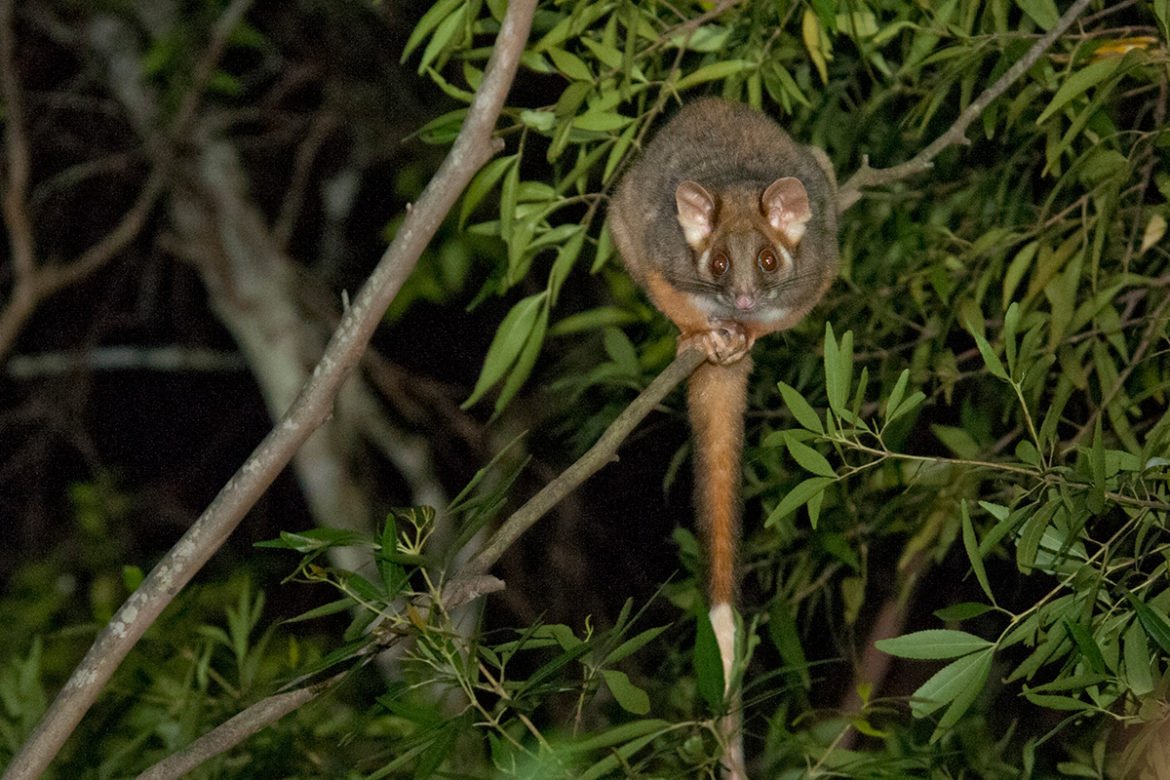
Ringtail possum is another common native Australian marsupial that can be spotted in Sydney. Smaller than its Brushtail cousin, the Ringtail possum also feeds on leaves, flowers and fruit of native and introduced trees.
This species is known for building large ball-shaped nests, called a drey. Each possum will build more than one drey within its home range. If one nest gets destroyed the possum moves to a different one.
The Ringtail possum is common in suburbia, but the best place within the city to look for it after dark is Centennial Park.
Eastern Pygmy Possum
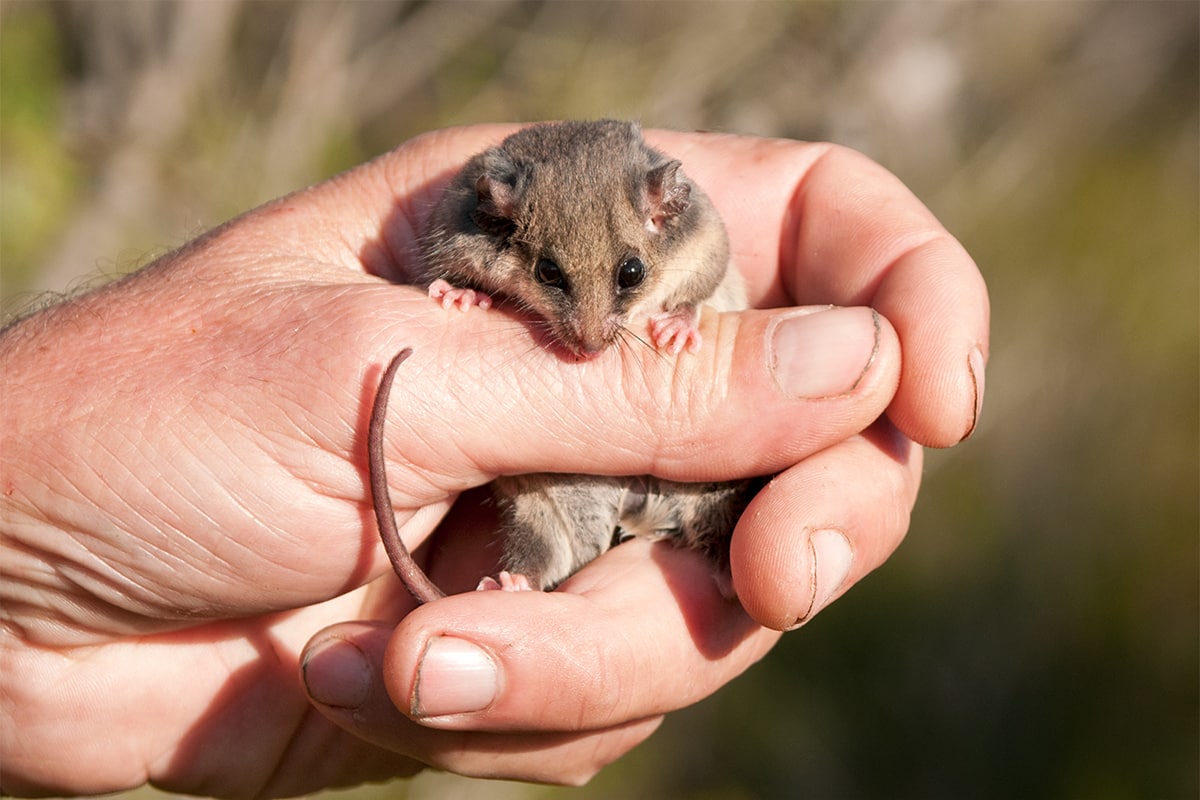
On the opposite end of the size scale, the adorable Eastern pygmy possum, one of the cutest Sydney animals, is all of 7 centimetres long. It feeds mainly on nectar but will also consume fruit and insects. It is an excellent climber and moves quickly and erratically while feeding on Banksia bushes.
The tiny possum hibernates during winter and emerges in spring when the flowers are plentiful. A good place to spot the pygmy possum is the Royal National Park. Look for them on the flowering bushes after sunset.
Sugar Glider
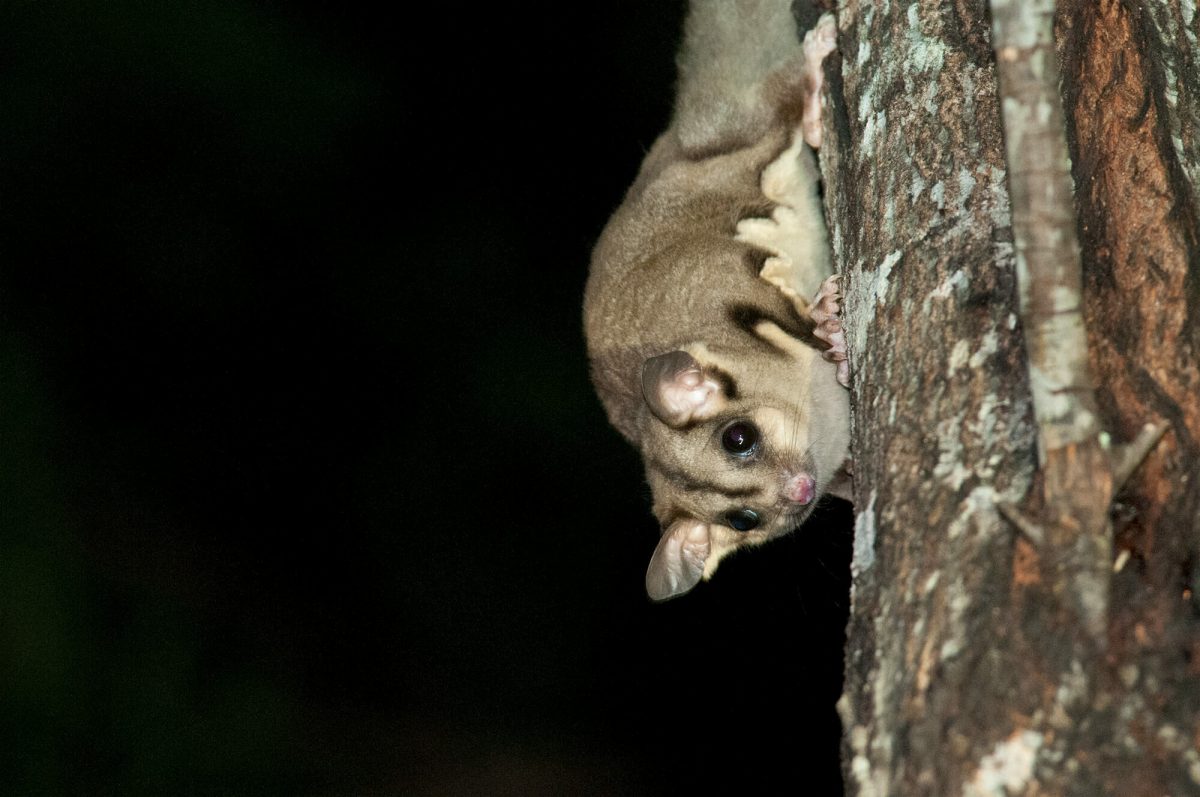
Another adorable mammal that can be found in the Royal National Park after dark is the Sugar Glider. It is a small possum with an extensive gliding membrane between its forelegs and its hind legs. This membrane allows the animal to glide up to 50 meters in a single leap.
The Sugar glider feeds on the sap of eucalypt trees, by biting through the bark of the trees. This makes the gliders quite easy to spot while they are busy tapping the sap.
The best way to see the gliders is by joining a spotlighting walk organized by the Sutherland Shire Bushcare group.
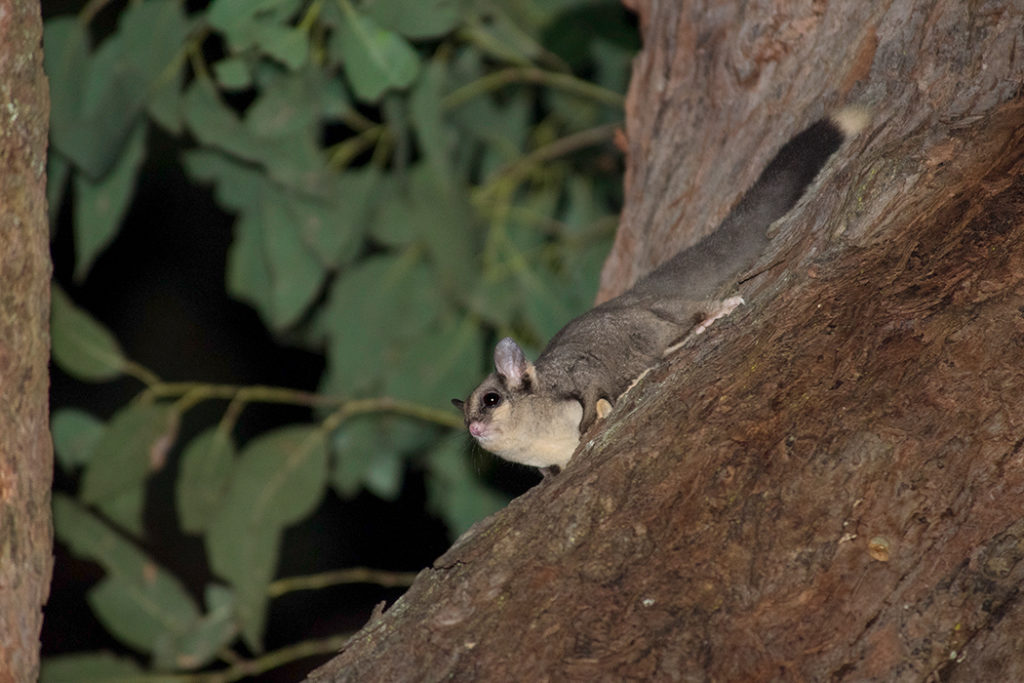
Greater Glider
The Greater glider is another gliding marsupial that can be spotted in the National Parks around Sydney. It is much larger than the Sugar glider and has two distinct colour morphs: dark brown and light grey.
It feeds almost exclusively on leaves and buds of eucalypt trees and therefore requires eucalypt woodland to survive.
The good place to look for the Greater glider is the Watagans National Park near Morisset, about 1 hr drive north of Sydney. They also used to be quite common in Royal National Park south of the city, but the population never recovered after the severe bush fires in 2001.
Long-nosed bandicoot
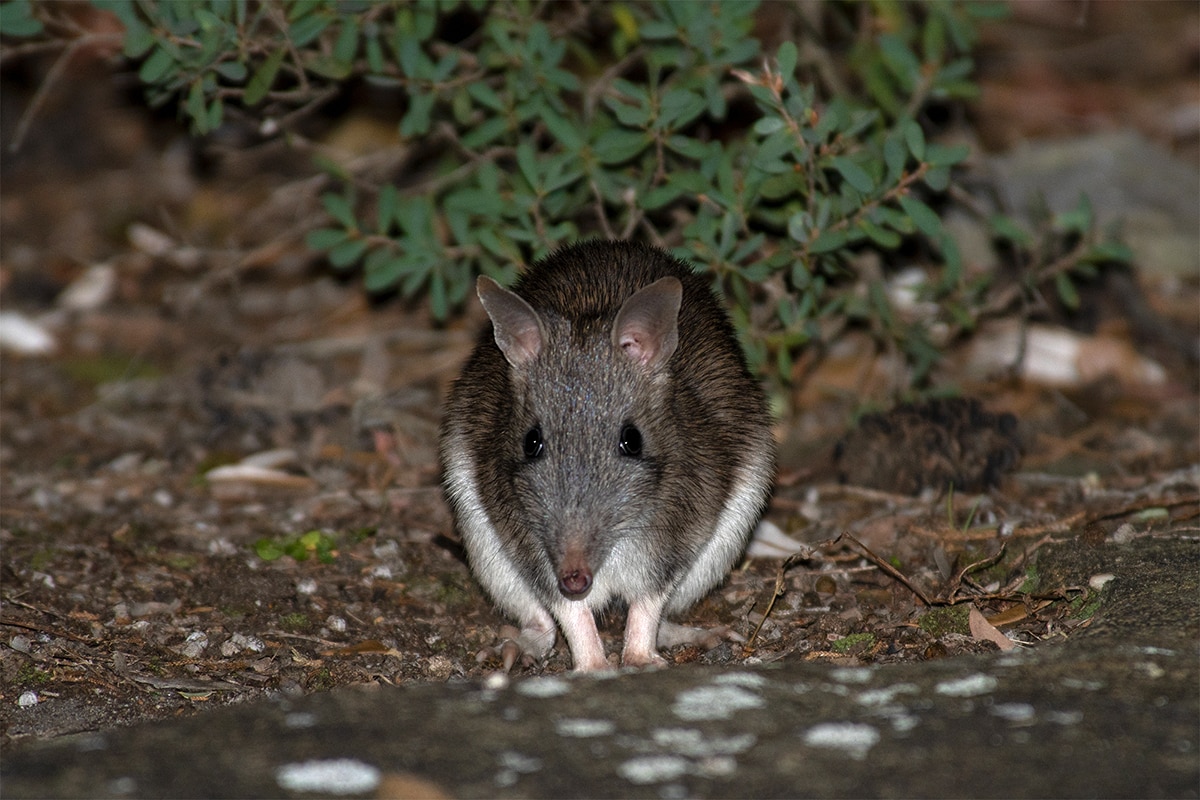
Most of the other terrestrial mammals in Sydney are trickier to spot. There is a population of the locally endangered Long-nosed bandicoots on the North Head, in Sydney Harbor National Park. The North Head Sanctuary is managed by the Australian Wildlife Conservancy (AWC) to protect this isolated population.
You can spot them after the sunset near the small settlement on the North Head Scenic Drive, opposite Collins beach road. Don’t forget to reduce your speed when driving on the North Head and keep an eye out for the bandicoots on the road.
Native Rodents
Bush rat
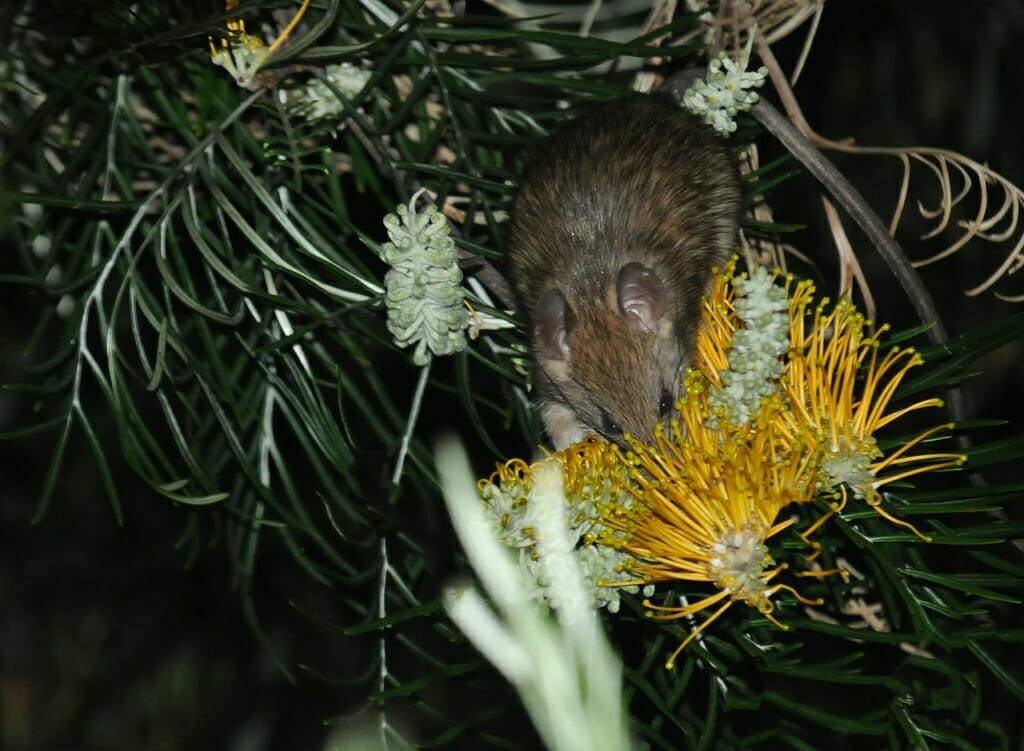
These guys are not what you think. They are not the black rats you typically see rampaging through rubbish bins in the urban back alleys all around the world. Bush rats are Australian native rodents that can be distinguished from black rats by having a much shorter tail.
A few years ago, Bush rats (Rattus fuscipes) were re-introduced on the North Head by the AWC (Australian Wildlife Conservancy). The scientists hope that once the native Bush rats establish in the sanctuary they would out-compete their introduced black cousins.
Swamp rat
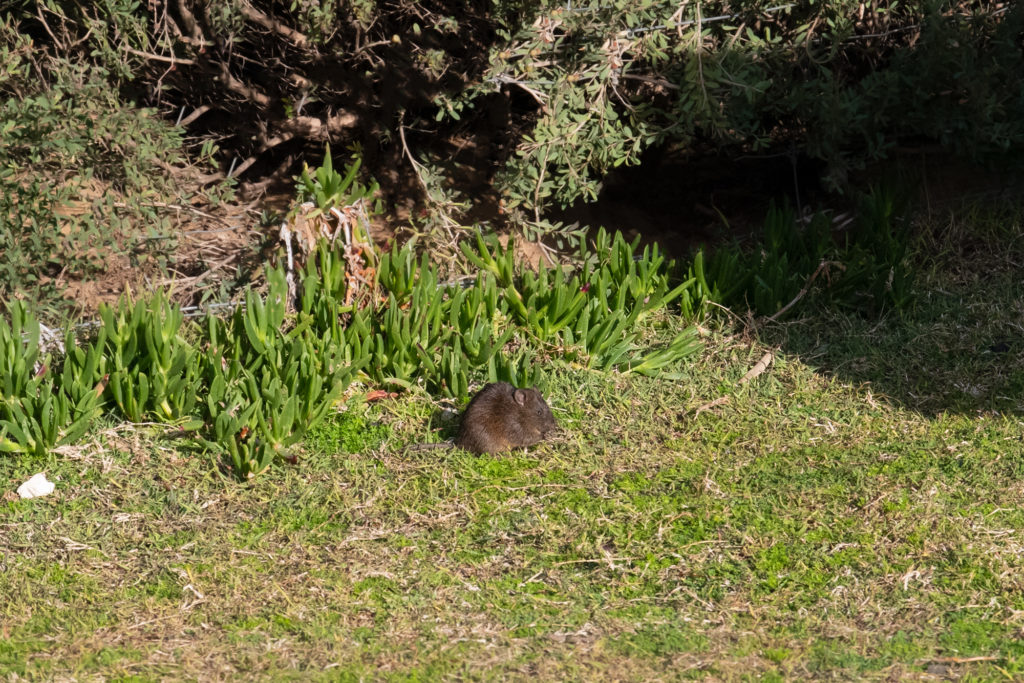
Another native Australian rodent is the Swamp rat. Native to the coastal areas of Southern and Eastern Australia, swamp rat grows to about 15-16cm in length. They are not easy to find if you go looking for them since they prefer dense vegetation areas, but you may occasionally spot them when you least expect it.
I have seen them a couple of times at Garie Beach in Royal National Park. The entire Coast Track would be a good opportunity for spotting these guys.
Bats and Flying foxes
Grey-headed Flying fox
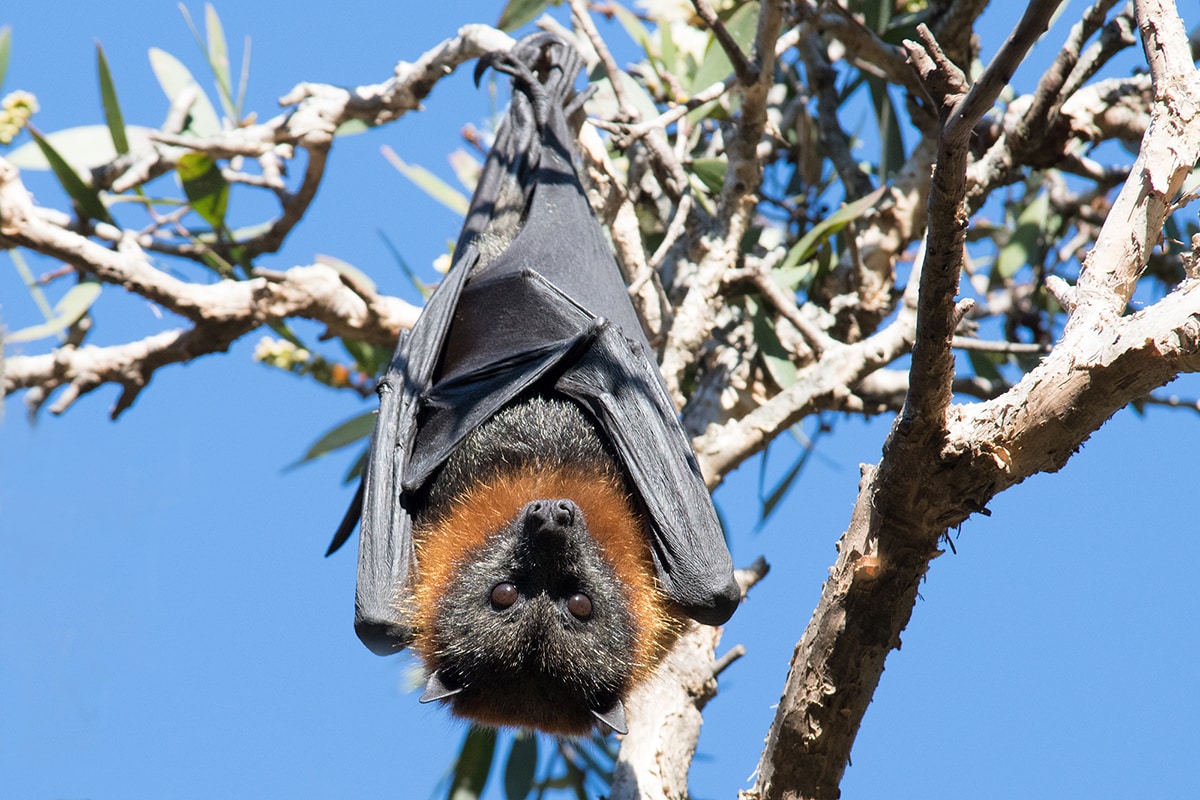
Following the two species of possum, the Grey-headed flying fox is the most common mammal in Sydney. Generally, the flying fox is a migrant species that follows the available resources, but over the last few decades, the Grey-headed flying fox has established a number of permanent camps in Australia’s cities.
In Sydney, a permanent camp existed at the Royal Botanic gardens, until the gardens initiated a controversial policy to remove the bats in order to preserve the trees that the bats were slowly decimating.
The flying foxes can still be seen in many parks in Sydney, and there is a large colony in Lachlan Swamp in Centennial Park.
Microbats
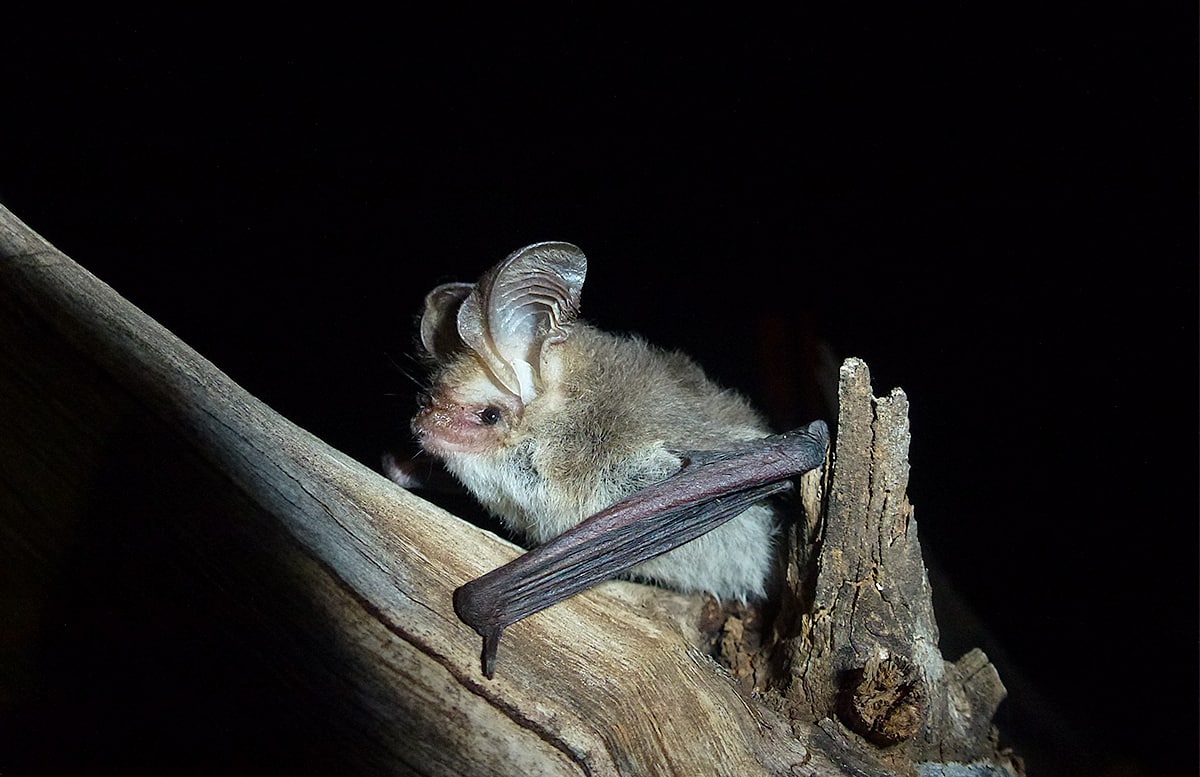
Centennial Park is also a good place to spot the microbats. In contrast to the large flying foxes, the microbats are tiny creatures, with a wingspan the size of your hand.
Some microbats roost in caves, others in tree hollows, and a few species roost in man-made structures.
The most common microbat in the urban areas of Sydney is the Gould’s wattled bat. Other species recorded in the Centennial park are the Southern myotis, Common bent-wing bat and the east coast free-tailed bat.
Parrots and Cockatoos
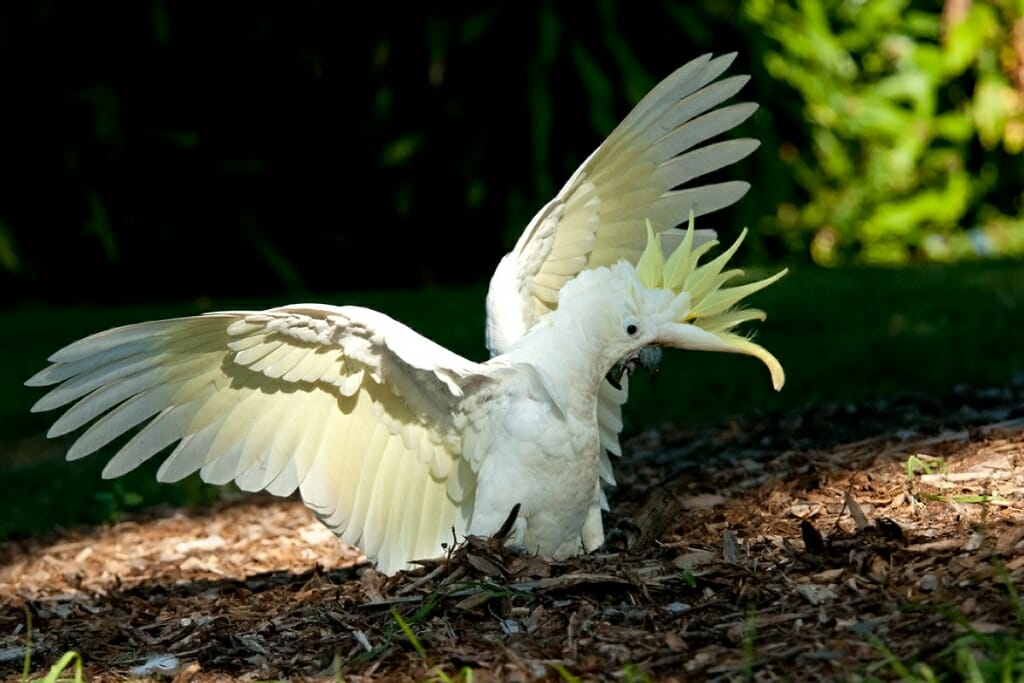
Australia is often referred to as the Land of the Parrots and for a good reason – out of 330 parrot species that inhabit our planet, 56 are found in Australia.
You will see parrots in Sydney wherever you go. The brilliantly coloured rainbow lorikeets are one of the most common birds in Sydney. Sulphur-crested cockatoos are a common sight on city streets and in the parks around Sydney. To see the gorgeous Yellow-tail black cockatoos head to Centennial Park.
To learn more about finding parrots in Sydney, have a look at my guide: Where to see Australian parrots in Sydney
Marine Wildlife
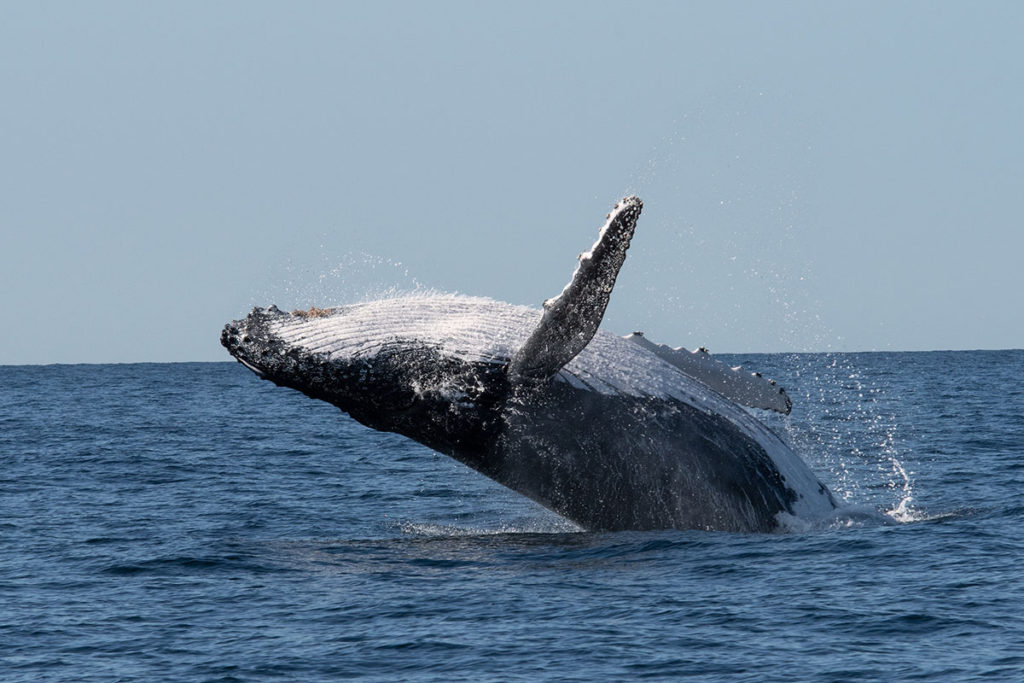
Luckily for Sydneysiders, our city is located on one of the world’s most beautiful harbours and that introduces an entirely new dimension to watching wildlife in Sydney – whales and other marine mammals.
More than 33,000 Humpback whales cruise past Sydney between May and October on their epic migration between Antarctica and the Great Barrier Reef. You can watch humpbacks from the shore or take a whale-watching cruise and see them on their terms. Here is everything you know about experiencing the Humpback migration in Sydney.
You can also take a Pelagic nature tour that would take you out into the open ocean where you have a chance of spotting different species of whales, dolphins, fur seals, as well as a wide variety of sea birds, including the magnificent Wandering Albatros. Read about my experience on pelagic tours here.
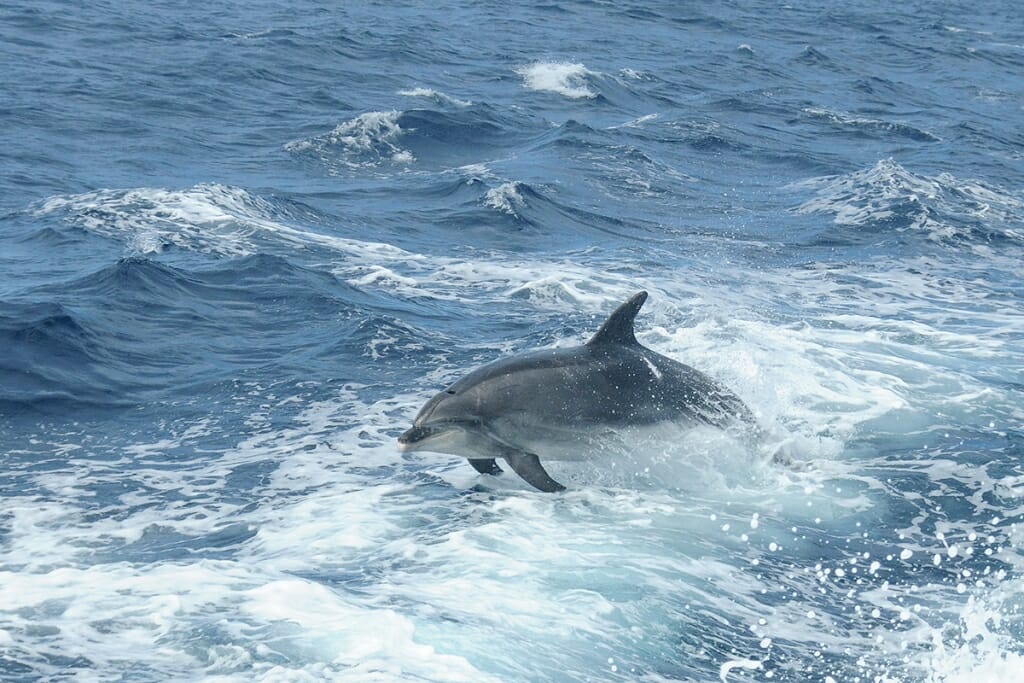
Have you spotted any native Australian animals in Sydney? I’d love to read about your sightings in the comments.

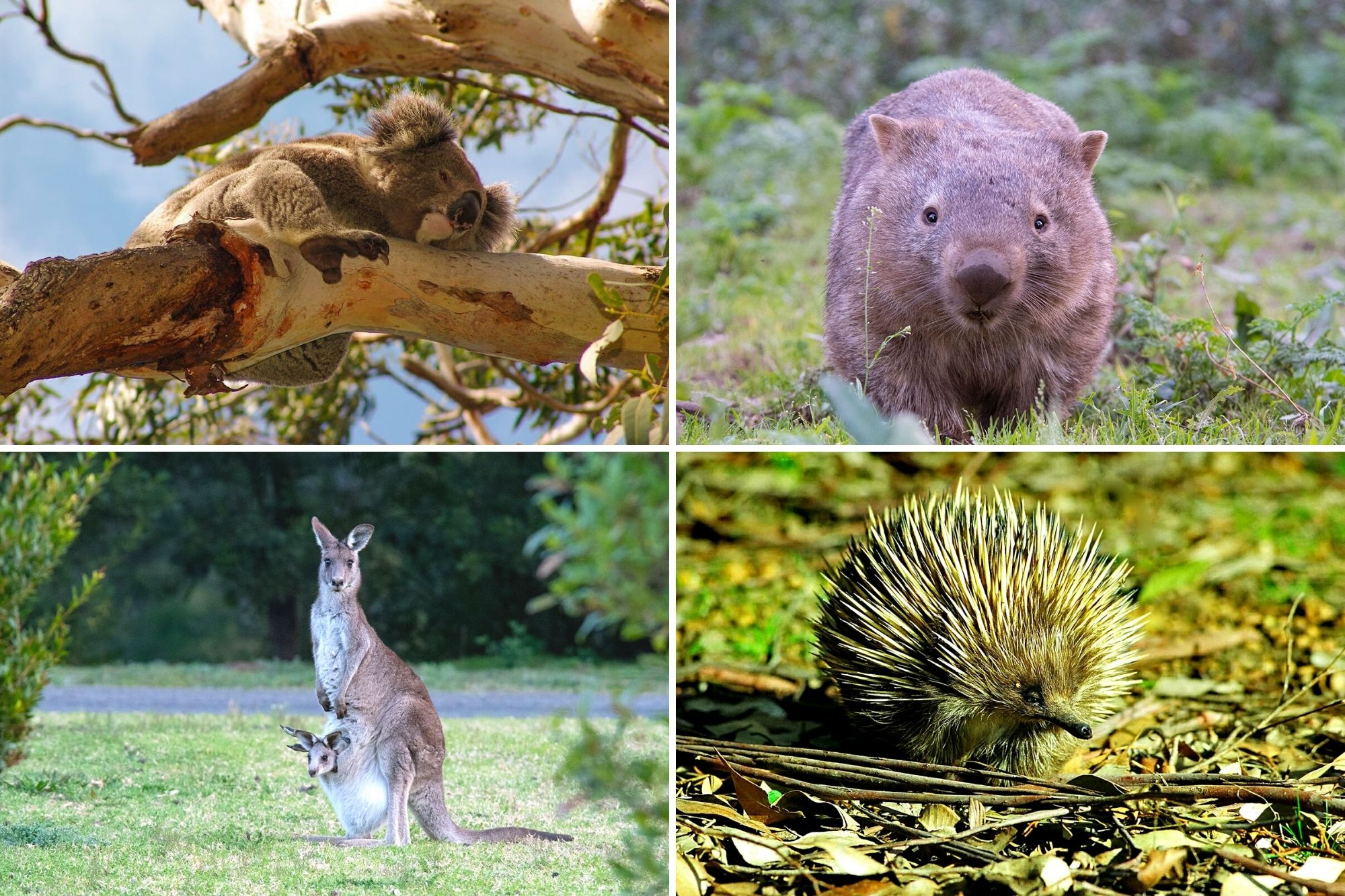
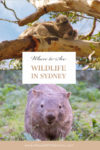
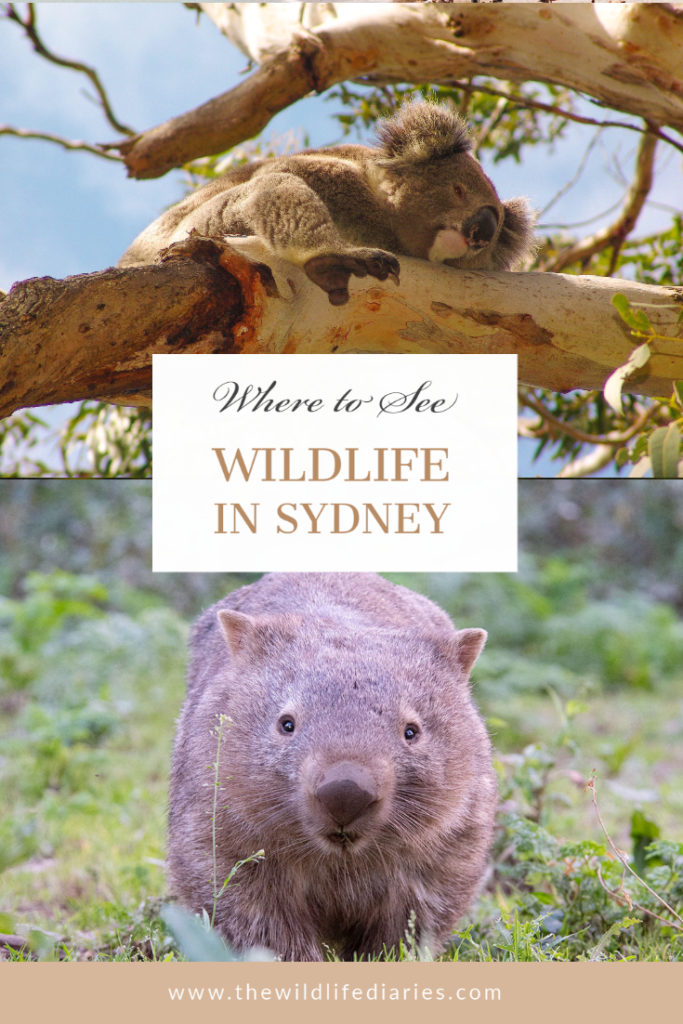
This post is fantastic thank you! I’m a biologist and love wandering around the city and the rocky shores looking for animals and now I have some new places to visit to see more animals after reading this blog post! Thanks!
Thank you, MG, I am glad the post is useful!
Are there also saltwater crocodiles in the swamps or lakes?
Not around Sydney :). The crocodiles occur much further north
Hi, We have had a resident Ring tail Possum in our backyard in Old Toongabbie for quite a few years. She nests in our Palm trees. Often Myna birds come and make a lot of noise and we know she must have been spotted in the Palm tree. I try to scare them away with a water Pistol. My husband made some nesting boxes, but she doesn’t use them.This year she has a baby on her back. We’ve seen her a few times in the daylight also. We have been scattering lemon and mandarin skins around our fence line, as the next door neighbour cat visits and we are concerned for the possum. We have found that they are all being eaten. Recently, late at night, I heard a noise and went out side to investigate and also spotted another “critter”, that we think might be a Bush Rat. Where can I send photos/video to get it identified ? Thanks in advance
Hi Denise, sounds like you have a lively backyard :) Rats can be tricky to ID unless you managed to photograph its tail. A good place to post an image and ask for help with ID is the Australian Mammal Identification group on facebook.
I saw a swamp wallaby in Sydney Harbour at Sugarloaf Bay Middle Cove. I was on a yacht and the wallaby came down from the bush’s to the foreshore foraging for food. It was eating the seed pods from the mangrove trees that were at the high water mark – they float in the water. It was very cute and great to see wildlife come back.
That sounds like an adorable sighting, thank you for sharing, Robert. Interesting that the wallabies are feeding in the mangroves, I’ve never seen them do that before.
Moved back to Sydney last year been away in London for 15+ years and saw an echidna on the road near Field of Mars Reserve. I was amazed as I haven’t seen that in my 25 years of growing up in the area and going on that road every day for school. I always used to dream about it. Hoping to get my kids to see red belly black snakes there, but haven’t seen them though we know they’re around. Flying foxes are around Riverglade Reserve near Huntley Cove if anyone else is interested.
What a fantastic sighting! It’s a very encouraging sign that we have urban echidnas in Sydney. And what an interesting name of the reserve! Going into summer it should be easier to spot snakes too. Though red-bellies are particularly shy. Best of luck!
Very helpful post
Squeeee this is so full of cutie critters!! I would loooove to encounter these, especially the echidna, the wombat and the platypus!
Back in London we’d regularly meet foxes and squirrels, but it looks like Sydney is far more fun for wildlife spotting!